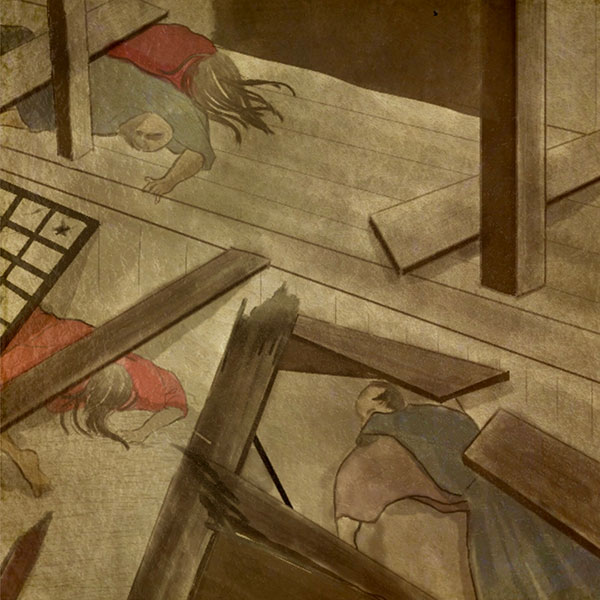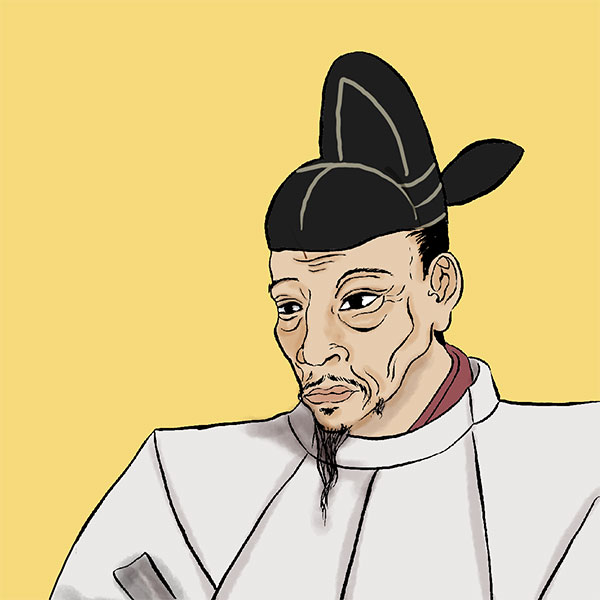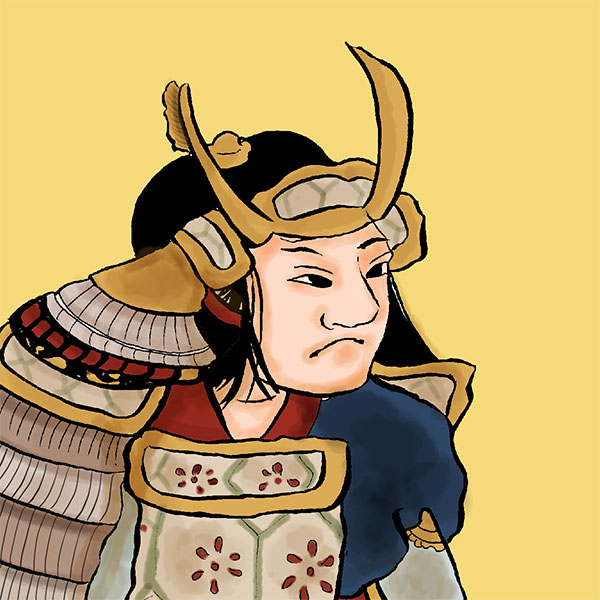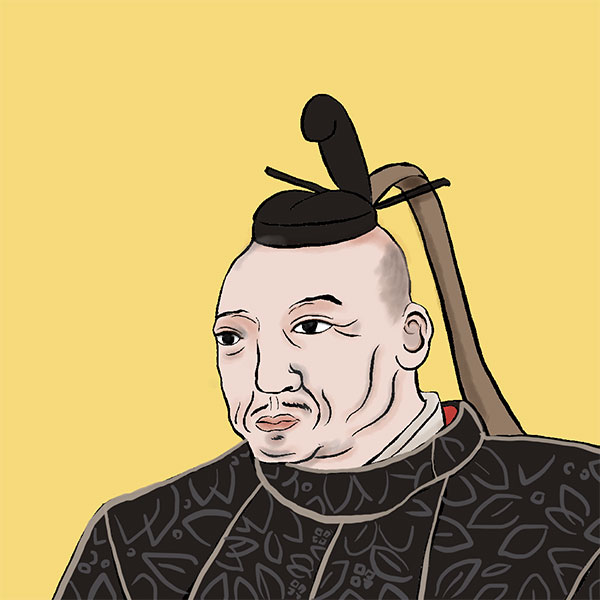Tensho Earthquake (1/2)The great disaster that caused Hideyoshi to give up on subjugating Ieyasu

Tensho Earthquake
- Article category
- case file
- Incident name
- Tensho Earthquake (1586)
- place
- Gifu prefecture, Toyama prefecture, Aichi prefecture, Mie prefecture
- Related castles, temples and shrines

Ogaki Castle

Kuwana Castle

Nagahama Castle
In Japan, an earthquake-prone country, large earthquakes have disrupted people's destinies since ancient times. One such earthquake was the Tensho Earthquake, which hit the center of Japan on November 29, 1586 (January 18, 1586). A huge earthquake of magnitude 8 forced Toyotomi Hideyoshi to cancel the subjugation of Tokugawa Ieyasu. In a sense, the Tensho Earthquake can be said to have significantly changed Japanese politics. So, this time we will introduce the Sengoku period from a slightly different angle: earthquakes!
What is the Tensho Earthquake?
The Tensho Earthquake was a major earthquake caused by an active fault that occurred on the night of November 29, 1586 (January 18, 1586). Judging from records from the time, it is said to have had a magnitude of 7.9 to 8.1 degrees. There are also records of an earthquake two days earlier, on November 27th, so there is a theory that two separate earthquakes occurred.
It is speculated that the earthquake was caused by three fault zones active at the same time, and the epicenter area spanned a wide range from the Kinki region to the Tokai and Hokuriku regions. Looking at the literature from that time, it appears that liquefaction was also occurring. The great disaster, which destroyed castles and houses and killed many people, also affected the movements of military commanders in various ways.
Situation before the Tensho Earthquake - Hideyoshi pacifies Kishu, Shikoku, and Etchu
Speaking of the situation in Japan immediately before the Tensho Earthquake, the Battle of Komaki and Nagakute in 1584 was a battle between Toyotomi Hideyoshi (then surnamed Hashiba), Tokugawa Ieyasu, and Oda Nobuo, who fought for about a year. Hideyoshi and Ieyasu made peace, with it still unclear who had won, but Hideyoshi devised various schemes to defeat Ieyasu.
At the same time, Hideyoshi made steady progress towards unifying the country. In the spring of 1585, he conquered Kii Province (present-day Wakayama Prefecture and southwestern Mie Prefecture) through the Kishu Conquest. He then attacked Chosokabe Motochika in Shikoku and pacified Shikoku in July. In August, he subjugated Narimasa Sasa of Etchu Province (Toyama Prefecture). Narimasa originally served Hideyoshi, but defected to Ieyasu during the Battle of Komaki Nagakute. Through Oda Nobuo's mediation, Narimasa was forgiven and began to serve Hideyoshi.
In addition, Hideyoshi donated money to strengthen relations with the Imperial Court and built Sento Imperial Palace, the imperial seat of Emperor Ogimachi after his abdication. In response to this, the Imperial Court appointed Hideyoshi as Junior Third Rank (Gon Dainagon) in November 1998, and in March 1992 (Senior Second Rank, Minister of the Interior). At this time, the court nobles fought over the position of Kanpaku, but Hideyoshi intervened and became Sakihisa Konoe's adopted son to become Kanpaku himself.
Hideyoshi prepares to subjugate Ieyasu
While fighting the surrounding enemies, Toyotomi Hideyoshi was steadily making preparations to subdue Tokugawa Ieyasu. In November 1998, a military storehouse was built at Ogaki Castle and rice and other supplies were stored. On November 19th, he sent a letter to Masayuki Sanada declaring that he would defeat Ieyasu, and also revealed his plan to dispatch troops to Mikawa Province (eastern part of Aichi Prefecture), where Ieyasu was located, on New Year's 15th.
Ieyasu, on the other hand, attacked the Sanada clan in the First Battle of Ueda in August 1996 in an attempt to take back the disputed Numata territory (Numata City, Gunma Prefecture) from Masayuki Sanada, which was a legacy of the Takeda clan. I was there. Numata territory was originally ruled by the Sanada clan, but during the peace settlement of the Tensho Migo War, Tokugawa Ieyasu promised to give it to the Hojo clan. When the Sanada clan was asked to hand over the Ieyasu, they turned against Ieyasu and switched sides from the Tokugawa clan to the Uesugi clan.
However, Ieyasu was defeated in the First Battle of Ueda. Furthermore, earthquakes and heavy rains struck the Tokugawa territory from 11th to 12th years of Tensho. For this reason, Ieyasu desperately tried to rebuild his country.
Meanwhile, in September, Hideyoshi demanded that Ieyasu release more hostages. Hideyoshi often asked Ieyasu to go to Kyoto and submit to his vassalage, causing the Tokugawa clan to split into hard-liners (such as Tadatsugu Sakai and Tadakatsu Honda) and accommodating factions (such as Kazumasa Ishikawa). Moreover, on November 13th, Kazumasa Ishikawa, a senior vassal of the conciliatory faction, betrayed Ieyasu and ran to Hideyoshi.
Kazumasa Ishida was a person who could be called ``Ieyasu's right-hand man,'' having served alongside Ieyasu since he was a hostage of Yoshimoto Imagawa. The Tokugawa family was also in charge of diplomacy with Hideyoshi. There are various theories as to why Hideyoshi ran away, including that Hideyoshi displayed his ``human nature,'' and that his position within the Tokugawa family worsened as hard-liners became more powerful, and he sometimes felt that his life was in danger. It is also said that there was a secret pact with Hideyoshi's side that said, ``If you come to Hideyoshi, you will avoid a war with Ieyasu.'' Which theory will be portrayed in this taiga drama?
Kazumasa's departure had a great impact on Ieyasu. Information about the Tokugawa clan was leaked to Hideyoshi by Kazumasa. For this reason, Ieyasu changed the military structure. It incorporated the Takeda army's corps organization and military techniques, which Ieyasu was interested in, and strengthened the defense of the castle.
Despite taking such measures, Ieyasu must have been extremely worried, thinking, ``Hideyoshi will surely attack this time to destroy the Tokugawa.'' The difference in military strength was 100,000 for Toyotomi's army and 30,000 to 40,000 for Ieyasu's army, so Ieyasu's army was at an overwhelming disadvantage. Now I have no choice but to fight Hideyoshi with the determination to die in battle...What will Ieyasu do?
Damage from the Tensho Earthquake ① Hideyoshi gives up on subjugating Ieyasu
Tokugawa Ieyasu's biggest crisis! The Tensho Earthquake occurred at that time. When the earthquake occurred, Toyotomi Hideyoshi had stopped by Sakamoto Castle (Otsu City, Shiga Prefecture) on the shores of Lake Biwa after visiting Ogaki Castle to inspect preparations for subjugating Ieyasu.
Sakamoto Castle was originally built as the residence of Akechi Mitsuhide. At such a castle, Hideyoshi was hit by an earthquake with a magnitude of 5. Fortunately, the damage to Sakamoto Castle was not too bad and Hideyoshi was safe. According to Louis Frois' History of Japan, Hideyoshi ``abandoned everything he had been working on, changed horses, and fled to Osaka, because it seemed to him the safest place.'' ”. In fact, Osaka Castle was shaken but did not collapse, and Hideyoshi appears to have spent time outside with his wife while the aftershocks continued.
Although Hideyoshi himself was unharmed, Ise, Mino, and Owari (Aichi Prefecture), where Hideyoshi had been preparing to subjugate Ieyasu, were severely damaged by the Tensho Earthquake. Ogaki Castle, where military provisions were stored, was completely destroyed and then burned down by a fire caused by the earthquake.
Ise-Nagashima Castle (Kuwana City, Mie Prefecture), the residence of Nobuo Oda, who was supposed to take the lead in subduing Ieyasu as an allied force, collapsed except for the castle tower and burned down in a fire. At this time, documents from the time say that a vassal managed to take away the tea utensils. In addition, according to documents from the time, ``the surrounding area became a river.'' It is speculated that this was caused by a tsunami or liquefaction phenomenon. In addition, the area around Ise-Nagashima Castle has turned into muddy soil, causing private houses to collapse or sink into spring water. By the way, the main keep of nearby Kuwana Castle collapsed, leaving only the stone walls remaining.
By the way, as for the damage to Ieyasu's side, it seems that the seismic intensity in Mikawa Province was less than 4, so other than Okazaki Castle, where Ieyasu was born, the damage was not that bad.
In this way, the Tensho Earthquake caused damage to one place after another, which served as a front-line base for Hideyoshi to subjugate Ieyasu. I don't know if Hideyoshi ever tweeted, "You lucky raccoon dog...", but with the recovery from the earthquake, it was no longer possible to subjugate Ieyasu. In this way, Ieyasu escaped disaster.
Tensho earthquake damage ② Kazutoyo Yamauchi loses his beloved daughter
One of the military commanders who was expected to play an active role in the subjugation of Ieyasu was Kazutoyo Yamauchi, the main character of the taiga drama ``Kumei ga Tsuji.'' Kazutoyo is a person who suffered the tragedy of losing his castle and his beloved daughter in the Tensho Earthquake.

- WriterNaoko Kurimoto(Writer)I am a former travel industry magazine reporter. I have loved history, both Japanese and world history, since I was a child. I usually enjoy visiting temples and shrines, especially shrines, and often do ``pilgrimages to sacred places'' themed around historical figures. My favorite military commander is Ishida Mitsunari, my favorite castle is Kumamoto Castle, and my favorite castle ruins is Hagi Castle. My heart flutters when I see the ruins of battle castles and the stone walls of castle ruins.









